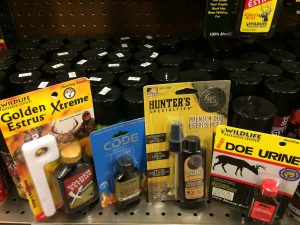
Ammunition may be expensive, but trying to salvage any that’s been submerged in water is risky, say the experts.
Photo from Pixabay
Here’s a roundup of some outdoor news for you, from around the country and region…
Submerged firearms and ammunition
Few gun owners will ever have to endure anything like the recent hurricanes that hit Texas, Louisiana and Florida.
But regular old garden variety flooding can happen anywhere. And that can mean submerged firearms and ammunition.
Do you know how to handle guns and ammo that have gotten soaked?
The National Shooting Sports Foundation and Sporting Arms and Ammunition Manufacturers’ Institute recently offered advice. They released two documents, one pertaining to guns, one to ammunition. Both are worth a look.
In general, though, both emphasize the need “to always err on the side of caution and safety.”
When it comes to submerged firearms, there are two issues. One is that guns exposed to water are at risk of moisture and rust damage to metal parts, wood stocks and grips, and optics. The other is that flood waters can deposit grit, silt and other debris in the action, barrel and safety systems.
First of all, gun owners are advised to make sure previously submerged firearms are unloaded. Next, disassemble the component parts. Finally, use up to two coats of a moisture-displacing lubricant to clean and stabilize the parts.
Another tip is to allow wood stocks and grips to air-dry rather than be force dried by exposure to heat.
Most of all, consider having firearms inspected by a gunsmith or the manufacturer.
As for ammunition, there are different considerations for centerfire, rimfire and shotshell ammunition. But in all cases, ammunition that’s not entirely functional can clog a barrel.
That’s why it’s often not worth saving, the groups said.
“It would be impossible to ascertain for certain the extent of the deteriorating affect, if any, the water may have had on each individual cartridge. Therefore, the safe answer is that no attempt be made to salvage or use submerged ammunition,” they suggest.
License fees
Pennsylvania’s Game and Fish and Boat commission are seeking increases in the cost of hunting, furtaking and fishing licenses.
Hunting license fees haven’t changed since 1999, fishing license fees since 2005. As a result, the commissions argue, they’re struggling to protect the state’s natural resources and provide the services sportsmen want.
Much as they wish they didn’t, their counterparts in Kentucky know the feeling.
Kentucky Department of Fish and Wildlife Resources commissioners recently recommended the department increase prices. It would be the first resident license price increase in more than a decade, and the first increase of the senior and disabled sportsman’s licenses since their inceptions in 1999.
Whether they’ll get the fee hike is unknown. In Kentucky, like Pennsylvania, lawmakers have to approve them.
Pennsylvania’s House of Representatives game and fisheries committee will debate the topic at a Sept. 26 meeting. But there’s been no word on when Kentucky lawmakers might act.
But as proposed, the cost of a Kentucky resident hunting license would go from $20 to $27. A resident fishing license would go from $20 to $23, a combination resident hunting/fishing license from $30 to $42. The resident joint fishing license for spouses would go from $36 to $42.
What’s most noteworthy? Given the state’s aging population, senior and disabled licenses would go from $5 to $18.
ATV rules
Pennsylvania’s Department of Conservation and Natural Resources is initiating a pilot program allowing larger all-terrain vehicles on two state forest trail systems.
The Whiskey Springs and Bloody Skillet ATV trail systems in Sproul State Forest will allow larger vehicles starting this season. The Susquehannock ATV trail system will follow suit in 2018.
“These three trail systems have the correct features to accommodate the larger ATVs, which is why they were selected for the pilot program. These larger machines have been steadily gaining popularity with the riding community,” said Secretary Cindy Dunn.
The change will allow for vehicles up to 64 inches wide and weighing up to 1,800 pounds.
The previous limits had been 58 inches and 1,200 pounds.
Urine ban
New York wildlife officials are contemplating doing something their counterparts in Pennsylvania have discussed, but as of yet been reluctant to do.

Urine-based deer attractants are a source of controversy because of CWD.
Bob Frye/Everybody Adventures
That’s ban the use of urine-based scents for deer hunting.
There is no CWD, or chronic wasting disease, in New York right now. And regulations proposed by the New York Department of Environmental Conservation prohibiting the use of urines are an attempt to keep things that way.
Public comment is being taken on that through today.
Yet, some hunters, urine manufacturers and deer farmers have already spoken out against the ban.
Meanwhile, Alaska, Arizona, Vermont, Virginia, Ontario and Nova Scotia have already banned the use of natural deer urine.









